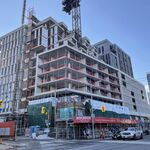Second_in_pie
Senior Member
Yes, the YUS blows many, many other subway lines out of the water. Considering that we have so much space to expand the system and alleviate that line while expanding service to the core and other dense areas, attracting many, many new riders, I don't understand why basically nothing's happening.Also, we should compare passenger use a little here! The Yonge line blows a lot of the lines mentioned out of the water ... in North America and some parts of Europe.
But I guess that's all the more incentive for more.
The big question is that of funding. Until the federal and governments becomes really responsible for transit funding, Metrolinx will have to get creative with funding solutions.
I think that using highway and arterial tolls using GPS technology is by far the best solution and isn't actually that hard a sell. However, I think it would make sense at least for a flat toll on the DVP south of Eglinton and the Gardiner East of Roncesvales. That sort of quarantines off the general downtown area where, if you're going to be going there then it'll be fairly straightforward to take the Go train in instead. By using 407-style tolls, that fee could just be added on. I think that if you do that, it'll make a big difference. If you just take a thousand dollars a year from all the people that commute from Richmond Hill to Downtown, and maybe a couple thousand for the crazies that come from Oshawa or Newmarket, not only does it provide an incentive to switch to the Go train, but it'll give a huge amount of money for Metrolinx to work with while keeping the system relatively fair.
I think on top of that, create a separate GGH gas tax, which encompasses the bigger GGH municipalities (GTA, Barrie, Hamilton, K-W and Guelph.) This tax would encourage higher fuel efficiency and new fuel sources, and would act as an alleviator for the provincial gas tax. Those taxes could then have the money go straight into the rural areas, building up small town bus service and maybe a provincial interurban and rural transit service. Also, tolling the 400-series Highways, especially the 401, 402, and 403, would be a logical way to fund HSR along the Quebec-Windsor corridor.




